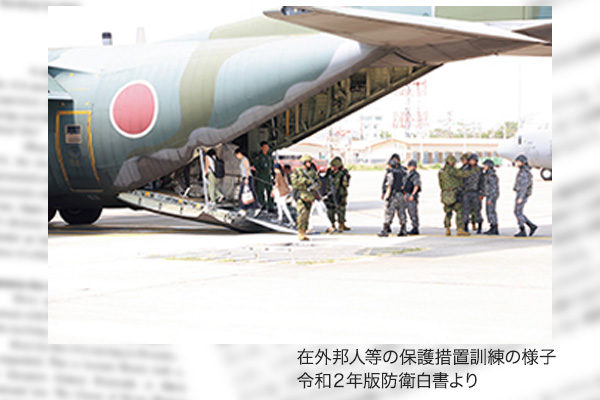Both the Japanese Foreign and Defense Ministries might have had a headache, as they have come under media fire for their poor performance in Japanese pullout from Afghanistan. Media have blamed embassy officials for having fled Afghanistan while leaving Japanese citizens there, the defense ministry for failing to quickly send Self-Defense Forces aircraft for evacuating Japanese citizens and their Afghan affiliates and the SDF for ending an evacuation mission after evacuating only one Japanese citizen and no Afghan affiliate. The government will be grilled by opposition parties from now. But it is wrong to irrelevantly criticize the government as there is a deep-rooted cause for the poor performance.
10 blank days
While watching the Afghan situation, I noticed a rapid development in which the Taliban accelerated its offensive after U.S. President Joe Biden’s sudden announcement on July 8 to complete U.S. troops’ withdrawal from Afghanistan by August 31 and extended its area of control one after another.
The Japanese Foreign Ministry on August 12 apparently has learned a U.S. intelligence report that the Taliban could take control of Kabul within 90 days. Did the National Security Council in charge of responding to emergency situations consider at this point how to evacuate Japanese citizens from Afghanistan? If it did, what recommendation did it make to the commander-in-chief, Prime Minister Yoshihide Suga?
On August 22, the defense minister ordered the SDF to start preparations for quickly implementing the transportation of Japanese evacuees from Afghanistan if requested by the Foreign Ministry. Due to national security secrets, the government may not be able to unveil in detail what it was doing during the 10 days. But the preparation order seemingly came too slowly.
Given the condition that SDF aircraft can be used for evacuating overseas Japanese only when the safety of the transportation is anticipated (Article 84-4, the SDF Act), in addition to other conditions the SDF should meet to take safeguard measures for these Japanese (Article 84-3), the decision to dispatch SDF aircraft might have been very tough.
The essence of the problem, however, is not a complicated legalism but tough restrictions imposed on the SDF, including Article 9 of the Constitution that denies military forces and has resulted in the SDF’s so-called “exclusively defensive posture” and the wrong interpretation of civilian control. SDF aircraft could not act as much as military aircraft from other countries at Kabul Airport. This is because activities of the SDF are strictly restricted by laws and the SDF is a special organization ruled by police law system.
SDF should be legalized as military forces
Japan swung to the left excessively in reaction to its past militarism. The Constitutional amendment is the only way to correct the excess. But even the ruling Liberal Democratic Party’s moderate proposal to stipulate the existence of the SDF in the Constitution has met opposition from coalition partners and opposition parties. The international situation is changing irrespective of wrangling between political parties in a tiny island country. How can Japan withstand big global waves to which the Constitution as the symbol of the postwar regime cannot respond? We may see cases similar to the Afghan case in the future. Unless Japan tries to legalize the SDF as military forces, it would have to remain miserably dependent on other countries.
I would like to pay my respects to the SDF that has faithfully carried out a mission under difficult conditions.
Tadae Takubo is Vice President of Japan Institute for National Fundamentals and a professor emeritus at Kyorin University.


